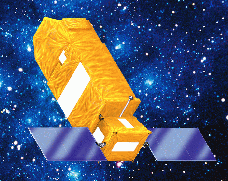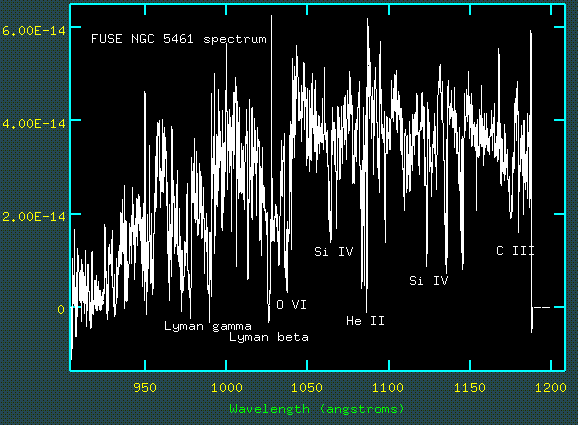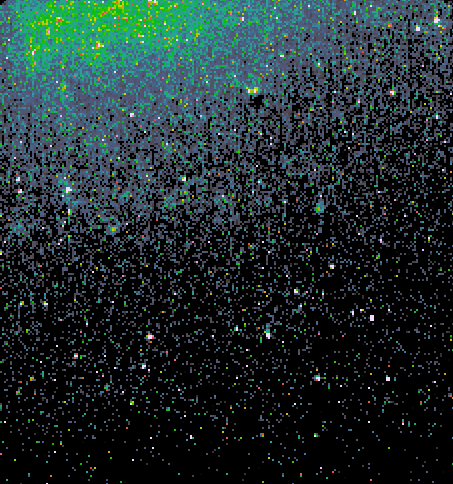
|
This drawing of FUSE in orbit is from the FUSE mission description. |

|
This drawing of FUSE in orbit is from the FUSE mission description. |
Ultraviolet astronomy has a very rich history from space (the only place it's easily possible from, even though high-altitude balloons and even SR-71s have been used as platforms). FUSE has a special role in probing the small spectral region from 912-1150 Angstroms. This range is difficult to work with, because there are no feasible mirror coatings that work well both here and at longer wavelengths. For example, the mirrors on HST have useful reflectivity only longward of 1150 Angstroms. This piece of the spectrum is uniquely valuable, though, being the only one in which we can trace some features of the hottest stars and the only one in which we can measure absorption by both the hottest interstellar gas (through absorption produced by O5+), and the dominant component of interstellar molecular gas, H2.
To minimize reflection losses, FUSE uses a clever optical design in which the light is dispersed and focussed by curved gratings. Four separate co-aligned mirrors allow the coatings to be tailored for maximum efficiency in each part of the spectrum, so each spectrum comes in from four detectors overlapping in coverage. I was planning to watch the launch in 1999, but delays put it right as I was at a meeting in California - so we just took the vacation in Orlando instead.(Well, I did get a look at the shuttle carrying Chandra on the pad out of the trip).
In a project with Jay Holberg, complementing the science planned for the STS-95 Starlite experiment, we've gotten FUSE spectra of star-forming regions in nearby galaxies. We want to understand how these well-studied objects compare with high-redshift galaxies, since this piece of the ultraviolet is the last we'll be able to see in the optical as redshifts increase (since eventually the galaxies' own hydrogen absorption blocks all their radiation that began shortward of 912 Angstroms). Here are some typical data (well, as usual that actually means "the best data we've seen so far"), for NGC 5461. This is one of the outer H II regions in M101, which we included to get an object with a low abundance of heavy elements. The spectrum (a 1.4-hour exposure) shows a number of absorption lines, after I clipped out some very narrow emission lines coming from the Earth's outer atmosphere (particularly hydrogen and oxygen emission). The galaxy appears at the top of the confirmation image from the tracking camera, with NGC 5461 just to the right of center, though that image is not particularly designed for anything more detailed - still, I always feel better knowing just where the spectrograph was pointing.


Last changes: 9/2000 © 2000